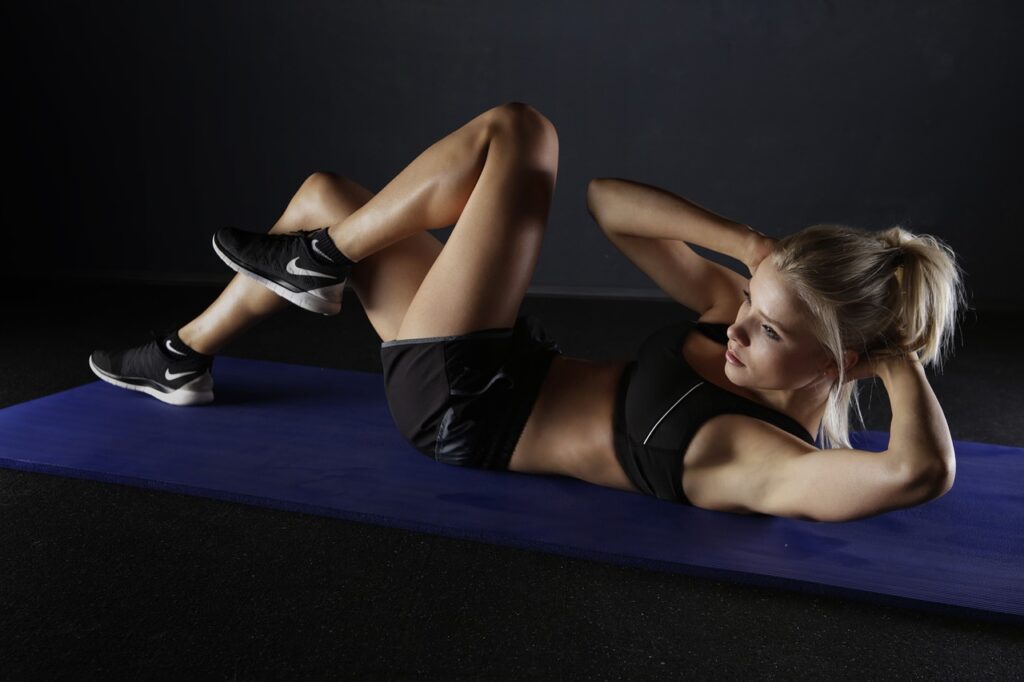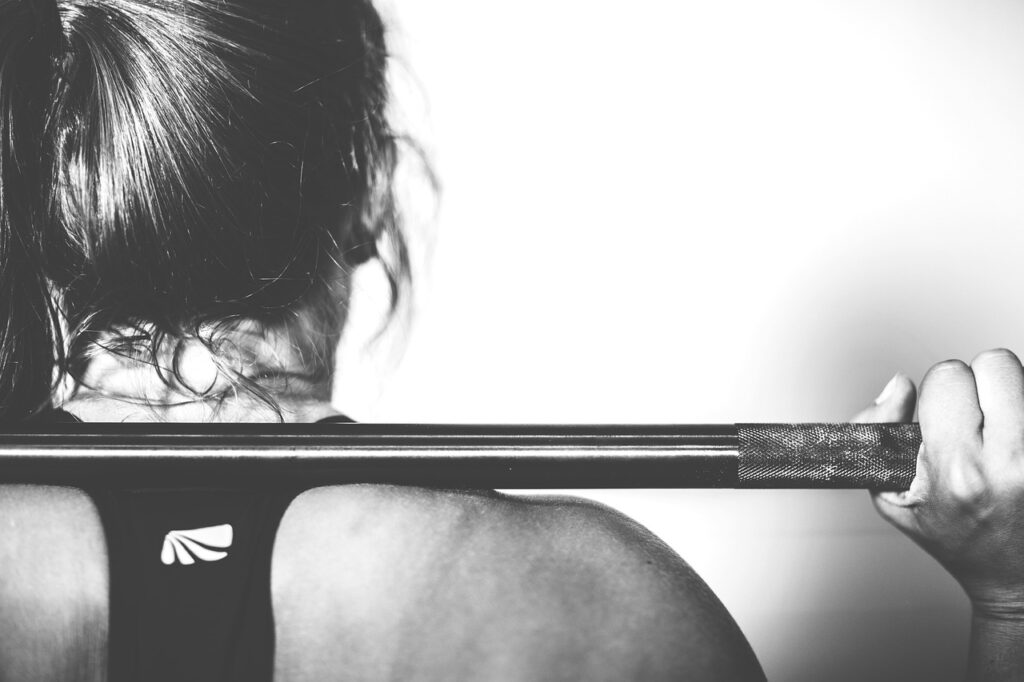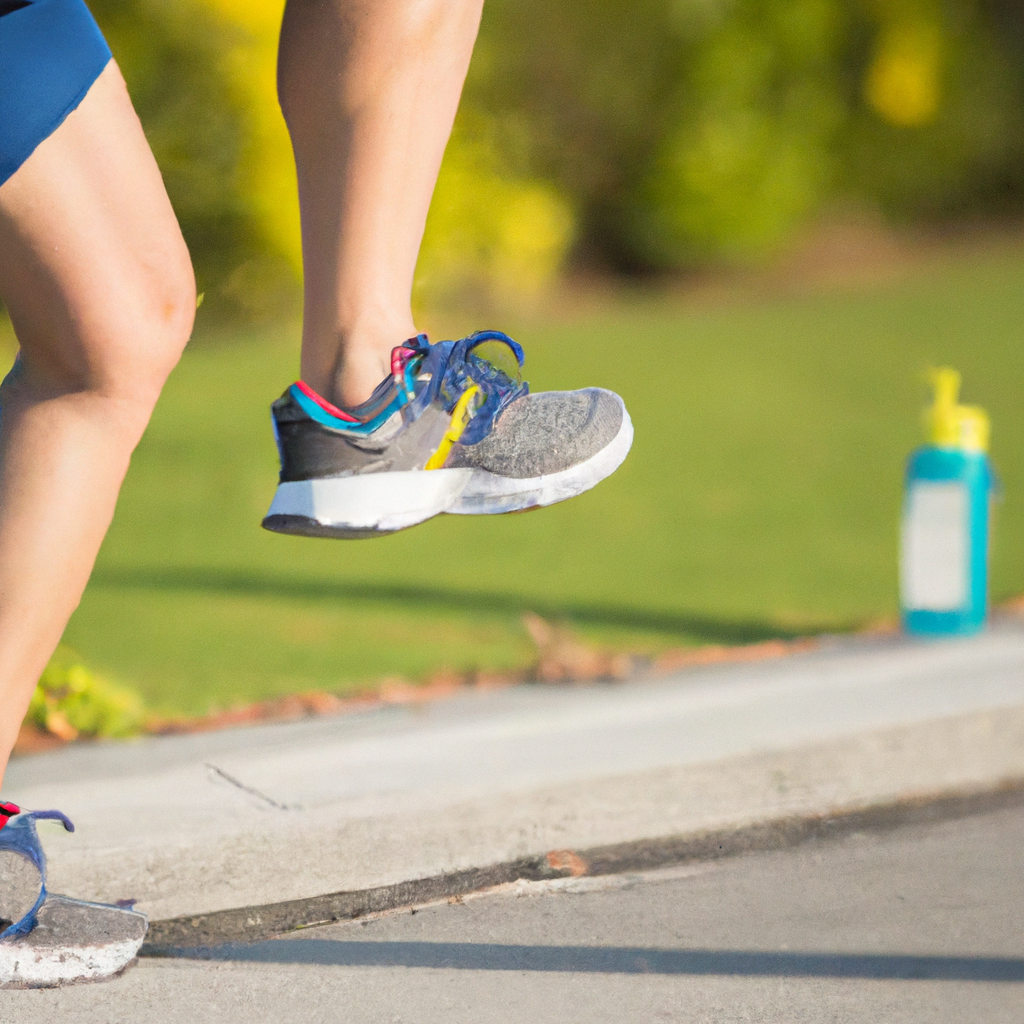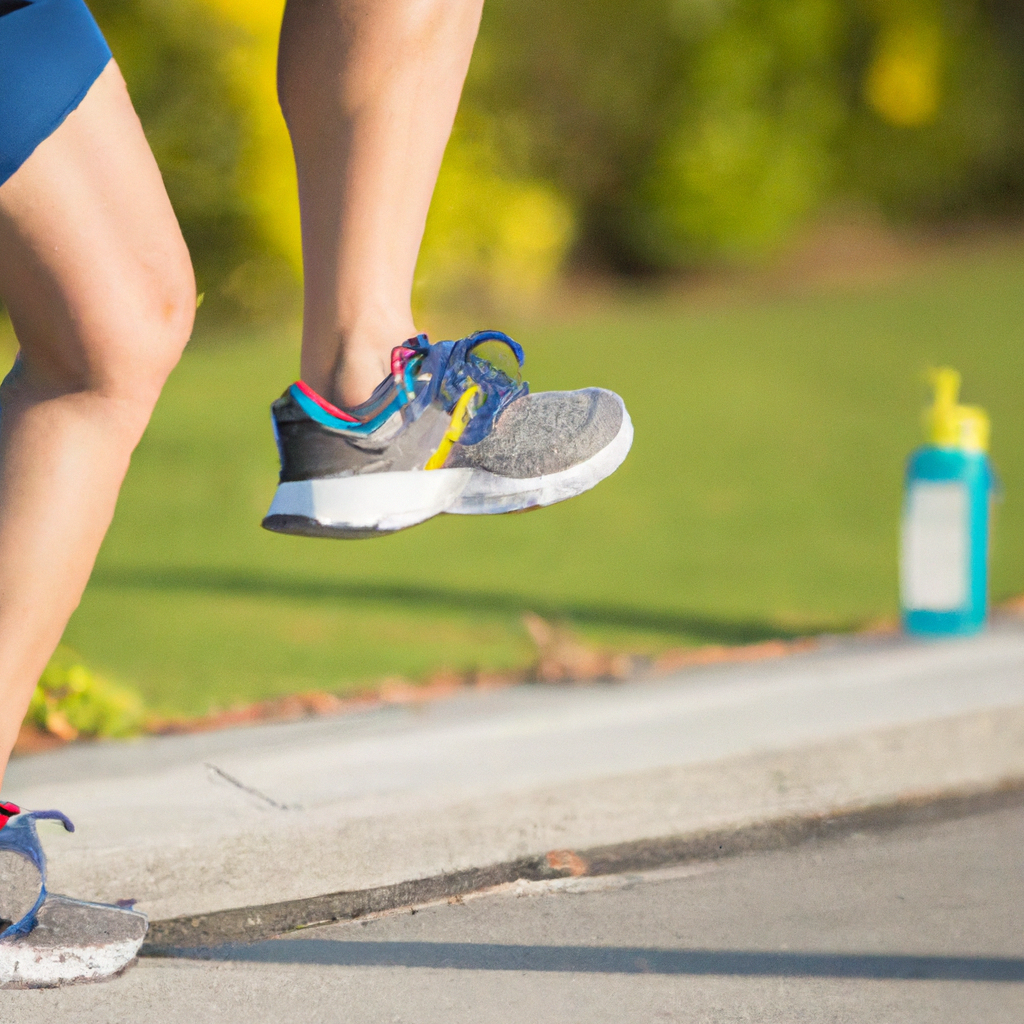Are you looking to shed those extra pounds and maximize your fat loss? Look no further than high-intensity interval training (HIIT). This article is all about the incredible benefits of HIIT when it comes to torching fat and getting you closer to your fitness goals. Whether you’re a beginner or a seasoned gym-goer, HIIT is a game-changer that can help you achieve the body you desire. So, get ready to discover how this intense yet efficient workout can revolutionize your fat loss journey and transform your physique.
Understanding High-Intensity Interval Training (HIIT)
Definition of HIIT
High-intensity interval training, or HIIT, is a workout method that involves alternating short bursts of intense exercise with periods of active rest or low-intensity exercise. This form of training has gained popularity due to its effectiveness in maximizing fat loss and improving cardiovascular fitness. HIIT workouts are typically shorter in duration compared to traditional steady-state cardio exercises, making it a time-efficient option for those with busy schedules.
Principles of HIIT
The principles of HIIT revolve around pushing your body to its maximum capacity during the intense exercise intervals, followed by active recovery or low-intensity exercise intervals to allow your heart rate to lower and regain your breath. The key components of HIIT include short duration, high intensity, varying exercise modes, and strategic rest intervals. By incorporating these principles into your workout, you can reap the benefits of increased calorie burn both during and after the workout.
Benefits of HIIT for Fat Loss
One of the main reasons HIIT is so effective for fat loss is its ability to increase your metabolic rate and keep it elevated for hours after your workout. Known as the Excess Post-Exercise Oxygen Consumption (EPOC) effect, HIIT stimulates your body to continue burning calories even after you’ve finished exercising. Additionally, HIIT helps activate fast-twitch muscle fibers, which are important for increasing muscle tone and boosting your overall metabolism. This combination of increased calorie burn and muscle activation makes HIIT a powerful tool for fat loss.
Designing an Effective HIIT Workout
Identifying Goals
Before jumping into an HIIT workout, it’s important to identify your goals. Whether you want to simply lose fat, improve cardiovascular endurance, or enhance athletic performance, clarifying your objectives will help you tailor your HIIT workout accordingly. This will ensure you’re maximizing the benefits of HIIT that are most aligned with your personal goals.
Choosing the Right Exercises
HIIT workouts can involve a wide range of exercises, but it’s important to choose ones that target multiple muscle groups and elevate your heart rate. Exercises such as burpees, mountain climbers, jumping jacks, and sprints are excellent options. By incorporating compound exercises that engage multiple muscle groups, you can maximize calorie burn and effectively challenge your cardiovascular system.
Determining Work and Rest Intervals
The duration of your intense exercise intervals and the length of your rest intervals play a crucial role in the effectiveness of your HIIT workout. For beginners, it’s recommended to start with shorter work intervals (e.g., 20 seconds) and longer rest intervals (e.g., 40 seconds). As you progress, you can gradually increase the duration of your work intervals while decreasing the rest intervals. Finding the right balance between intensity and recovery is essential to ensure you’re challenging your body while still allowing for adequate rest.
Progressing Intensity and Volume
To continue making progress with your HIIT workouts, it’s important to regularly assess and adjust the intensity and volume. Increasing intensity can involve increasing the speed or resistance of your exercises, while increasing volume can involve adding more rounds or sets to your workout. By gradually progressing the intensity and volume of your HIIT workouts, you can continually challenge your body and prevent plateauing.


Optimizing Fat Loss with HIIT
Increasing EPOC (Excess Post-Exercise Oxygen Consumption)
One of the key mechanisms behind HIIT’s fat-burning effects is the increased EPOC, which is the amount of oxygen consumed by the body after exercise. HIIT workouts elevate your metabolic rate, leading to an increased EPOC that persists for several hours after your workout. To optimize EPOC, it’s important to incorporate challenging exercises and push yourself to your maximum capacity during the intense intervals.
Activating Fast-Twitch Muscle Fibers
Fast-twitch muscle fibers are responsible for explosive movements and have a higher potential for growth compared to slow-twitch fibers. By engaging these fast-twitch muscle fibers through HIIT exercises, you can not only improve your overall muscle tone but also enhance your metabolic rate. This is because fast-twitch muscle fibers require more energy to perform, leading to a higher calorie burn during and after your workout.
Promoting Fat Oxidation
During HIIT workouts, the body primarily relies on carbohydrates for energy. However, research suggests that HIIT can also enhance fat oxidation, allowing your body to burn fat as fuel. This is particularly beneficial for individuals aiming to reduce overall body fat and maintain or improve muscle mass. The combination of intense exercise and intervals of active rest during HIIT workouts encourages the body to utilize fat stores for energy.
Enhancing Metabolic Rate
HIIT has been shown to significantly increase metabolic rate both during and after exercise. The intense bursts of exercise activate various physiological processes that result in an elevated metabolic rate. This increase in metabolic rate means your body is burning calories at a higher rate throughout the day, even when you’re not exercising. As a result, HIIT can be an effective tool for long-term fat loss and weight maintenance.
Incorporating Resistance Training into HIIT
Benefits of Combining Resistance Training and HIIT
While HIIT alone is effective for fat loss, combining it with resistance training can further enhance your results. Resistance training helps build lean muscle mass, which in turn increases your basal metabolic rate. By incorporating resistance exercises into your HIIT workouts, you can maximize calorie burn, even at rest. Additionally, resistance training helps improve overall body composition by promoting muscle growth and toning.
Choosing the Right Resistance Exercises
When selecting resistance exercises for your HIIT workouts, focus on compound movements that target multiple muscle groups simultaneously. Exercises such as squats, lunges, deadlifts, push-ups, and rows are excellent choices as they engage large muscle groups and require coordination and stability. By incorporating these exercises, you can effectively challenge your muscles and optimize fat loss during your HIIT workout.
Integrating Resistance Exercises with HIIT
To integrate resistance exercises seamlessly into your HIIT workout, you can alternate between intense cardio exercises and resistance exercises. For example, perform a set of jump squats or burpees followed by a set of dumbbell rows or push-ups. This combination keeps your heart rate elevated while effectively engaging your muscles. Be sure to maintain proper form and technique during resistance exercises to reduce the risk of injury and maximize their effectiveness.


Effective HIIT Cardio Workouts for Fat Loss
Cardio Workouts for Beginners
If you’re new to HIIT and cardiovascular exercise, it’s important to start gradually and build up your endurance. Begin with shorter work intervals and longer rest intervals to allow your body to adapt. A simple beginner’s HIIT workout could involve alternating 30 seconds of jumping jacks, followed by 60 seconds of brisk walking or marching in place. Repeat this circuit for a total of 10-15 minutes and gradually increase the intensity and duration as you become more comfortable.
Intermediate HIIT Cardio Workouts
As you progress with your HIIT workouts, you can increase the intensity and duration of your intervals. An intermediate HIIT cardio workout could involve alternating 45 seconds of high knees, followed by 30 seconds of jogging in place. Take a 20-second rest interval between each exercise and complete 4-5 rounds. Remember to maintain proper form and push yourself to your maximum capacity during the intense intervals.
Challenging Advanced HIIT Cardio Workouts
For those who are ready for a greater challenge, advanced HIIT cardio workouts can be highly effective for fat loss. An advanced HIIT workout could involve alternating between 30 seconds of burpees, 30 seconds of mountain climbers, and 30 seconds of squat jumps, with a 10-second rest interval between each exercise. Complete 6-8 rounds of this circuit, allowing yourself to recover adequately during the rest intervals. Be prepared to work hard and push your limits with these advanced workouts.
Nutrition Tips to Support Fat Loss with HIIT
Maintaining a Caloric Deficit
To optimize fat loss with HIIT, it’s important to ensure you’re in a caloric deficit. This means consuming fewer calories than your body needs to maintain its current weight. While HIIT can help increase your calorie burn, it’s essential to combine it with a healthy, balanced diet to achieve sustainable fat loss. Consult with a registered dietitian or a healthcare professional to determine the appropriate caloric deficit for your individual goals and needs.
Balancing Macronutrients
In addition to maintaining a caloric deficit, it’s important to pay attention to your macronutrient intake. A balanced diet should include an appropriate balance of carbohydrates, proteins, and fats. Carbohydrates provide the fuel for your HIIT workouts, while proteins support muscle growth and repair. Fats are essential for hormonal and cellular functions. Be mindful of consuming whole, unprocessed foods and aim to include a variety of nutrient-dense sources of each macronutrient in your diet.
Eating Adequate Protein
Protein plays a crucial role in supporting muscle growth and repair, which is especially important when incorporating HIIT into your fat loss journey. Aim to consume an adequate amount of protein with each meal and snack to support your body’s recovery and optimize muscle synthesis. Good sources of protein include lean meats, fish, eggs, dairy products, legumes, and plant-based protein alternatives like tofu and tempeh.
Timing Meals Appropriately
Timing your meals and snacks appropriately can also support fat loss and optimize your energy levels for HIIT workouts. It’s generally recommended to consume a balanced meal containing carbohydrates and protein 1-3 hours before your workout to provide the necessary fuel. Additionally, consuming a post-workout meal or snack within 30-60 minutes after your HIIT session can aid in muscle recovery and replenishment of glycogen stores.


Monitoring Progress and Adjustments
Using Performance Metrics
To track your progress and make necessary adjustments, it’s important to monitor your performance metrics during your HIIT workouts. Keeping a record of metrics such as duration, intensity, and repetitions can help you identify if you’re progressing over time. Measuring performance metrics also allows you to set specific goals and challenge yourself to improve with each workout.
Tracking Body Composition Changes
In addition to performance metrics, tracking changes in your body composition can provide valuable insights into your fat loss journey. Monitor metrics such as body weight, body fat percentage, and measurements of specific body parts to assess progress over time. Remember that the number on the scale is not always the best indicator of progress, as changes in body composition can occur without significant changes in weight.
Evaluating Fat Loss Plateaus
It’s not uncommon to experience fat loss plateaus when engaging in a long-term HIIT program. If you find that your progress has stalled for several weeks, it may be time to evaluate your current routine and make necessary adjustments. Consider increasing the intensity or duration of your HIIT workouts, adjusting your nutrition plan, or seeking guidance from a fitness professional to help break through the plateau.
Making Necessary Adjustments
As you progress with your HIIT workouts, it’s important to continually assess and make necessary adjustments to ensure continued progress. This may involve increasing the intensity, volume, or frequency of your workouts, modifying your nutrition plan, or incorporating other forms of exercise to complement your HIIT routine. The key is to listen to your body and adapt your routine to avoid stagnation and promote ongoing fat loss.
Precautions and Safety Considerations
Consulting with a Healthcare Professional
Before starting any new exercise program, including HIIT, it’s important to consult with a healthcare professional. They can assess your current fitness level, address any underlying health conditions, and provide guidance on how to safely incorporate HIIT into your routine. If you have any pre-existing injuries or medical concerns, it’s particularly important to seek professional advice to prevent exacerbation of the condition.
Appropriate Warm-up and Cool-down
To minimize the risk of injury and optimize your performance, it’s essential to include a proper warm-up and cool-down before and after your HIIT workouts. A warm-up should consist of dynamic stretches, light cardio exercises, and mobility movements to gradually increase your heart rate and prepare your muscles for the intense exercise ahead. Similarly, a cool-down should involve static stretches and low-intensity movements to aid in muscle recovery and reduce post-workout soreness.
Avoiding Overtraining
HIIT is a high-intensity exercise method that places significant demands on your body. To prevent overtraining and reduce the risk of injury, it’s crucial to allow for adequate rest and recovery between HIIT sessions. Avoid performing HIIT workouts on consecutive days and listen to your body’s signals of fatigue and exhaustion. Incorporating rest days and low-intensity workouts into your routine can help prevent burnout and keep you on track for sustainable progress.
Injury Prevention
While HIIT can be an effective tool for fat loss, it’s important to prioritize safety and injury prevention. This includes using proper form and technique during exercises, wearing supportive footwear, and using appropriate equipment. If you’re new to HIIT or unfamiliar with certain exercises, it may be beneficial to seek guidance from a qualified fitness professional who can ensure you’re performing movements correctly and safely.


Incorporating Recovery and Rest Days
Understanding the Importance of Rest
Rest days are a crucial part of any exercise program, including HIIT. These days allow your body to recover and repair from the intense workouts, preventing overuse injuries and helping maintain long-term progress. It’s important to listen to your body and prioritize rest when needed. Pushing through excessive fatigue and muscle soreness can lead to burnout and hinder your overall results.
Implementing Active Recovery Days
In addition to complete rest days, incorporating active recovery days can also be beneficial for your overall progress and well-being. Active recovery involves engaging in low-intensity activities such as yoga, Pilates, swimming, or walking. These activities promote blood circulation, aid in muscle recovery, and provide a mental break from high-intensity workouts. Aim to include at least one or two active recovery days in your weekly routine.
Balancing HIIT with Low-Intensity Workouts
To prevent overtraining and maintain a balanced fitness routine, it’s important to strike a balance between HIIT workouts and low-intensity workouts. Low-intensity workouts such as steady-state cardio, yoga, or strength training can complement HIIT by providing a less intense yet still effective workout. This balance allows your body to recover from the high demands of HIIT while still enjoying the benefits of regular exercise.
Conclusion
High-intensity interval training (HIIT) is a powerful tool for maximizing fat loss and improving overall fitness. By understanding the principles of HIIT, designing effective workouts, optimizing fat loss through various mechanisms, incorporating resistance training, and balancing nutrition, you can make HIIT a key component of your fat loss journey. Remember to prioritize safety, listen to your body, and make necessary adjustments to ensure continued progress. With consistency and dedication, HIIT can help you achieve your fat loss goals and improve your overall health and well-being.





